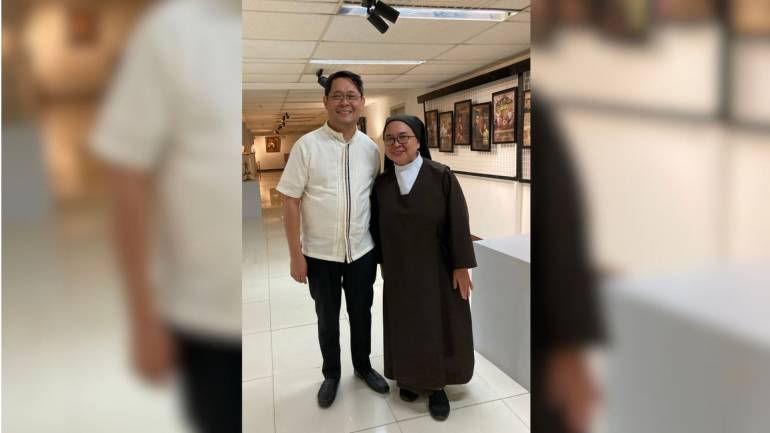Philippines: Cebu Carmelites Mark 75 Years of Faith and Service

Filipina contemplative missionaries from the Order of Discalced Nuns of the Order of the Blessed Virgin Mary of Mt. Carmel (OCD) visited Cebu for a cultural treat to celebrate the 75th anniversary of the founding of Cebu Carmel.
They came from different parts of the country, from Laoag in the north to Jolo in the south. They participated in the three-day celebration with Filipina Carmelites from Ghana in West Africa, Capetown in South Africa, and Brussels, Belgium.
On May 13, 1949, the first Carmelite Sisters arrived in Cebu City, central Philippines. Four years earlier, World War II had ended, and the Philippines was still trying to recover from its ravages.
Jaro Carmel, believed to be the oldest monastery in the Philippines, inspired the founding of Cebu Carmel. In November last year, the Carmelite Sisters in Jaro celebrated 100 years of presence in the Philippines and gave honor to the French nuns who arrived from Vietnam to set up the order in Jaro, then a district of Iloilo City. The Carmelite Sisters refer to Jaro Carmel as Casa Madre, or Mother House.
In the Philippines, 22 autonomous Carmelite monasteries belong to the Carmelite Sisters Federation. The Carmelites in Kuching, Malaysia, belong to the Philippine Federation.
A box theater in the San Pedro Calungsod Chapel hosted six vignette plays for 30 to 40 Carmelite contemplative missionaries and their lay companions on May 11, 2024, three days before Cebu Carmel's Diamond Jubilee celebration.
The vignette plays by playwright and director Monsignor Agustin Anjacas are part of the “Mga Dula sa Pagtoo” (plays of faith), an evangelization program that uses theater and the arts to spread the good news. The MDP's 130th run has taken place both in the Philippines and abroad.
Radio Veritas Asia talked to Sr. Carmel of the Crucified Jesus after the stage plays. A native of Cebu, she told RVA that the Carmelite Sisters enjoyed watching the vignette plays because each vignette presented “a slice of life” that anybody could relate to. On behalf of the Carmelite Sisters, she thanked Monsignor Ancajas and members of the Teatro de San Pedro for an entertaining night.
The following day (May 12, 2024), the Carmelite Sisters had fun watching the famed Sandiego cultural group, who danced to the lilting tune of “I Love Cebu." The sisters got to their feet and joined the dancing.
On Diamond Jubilee night, the Carmelite Sisters had the Dimiao Youth Choir from Bohol perform.
Sr. Carmel, who came from Brussels, said she was happy to join the OCD jubilee because she was able to visit her family and bond with Carmelites from other monasteries. She also planned to reunite with former college classmates who she hadn’t seen in over two decades.
Before becoming a religious sister, Sr. Carmel studied medicine and earned a few units while studying at a local university. In her second year, she entered the Carmelites.
She told RVA that her two years in medical school have helped the congregation because she is applying her practical knowledge of medicine as an "infirmarian" at the monastery. She takes care of elderly nuns, some of whom are suffering from dementia.
The Carmelite order dates back to the Middle Ages. By founding a small convent in Avila in 1562, the saint St. Teresa started the most significant and extensive reform for the Carmelite order, which was a Christian hermit community in Palestine founded in the 11th century.
When asked about the impact of modernity and new technology on the Carmelite Order, Sr. Carmel of the Crucified Jesus stated that while change is inevitable, the Order will endure because of its "deep roots in God."
On the Diamond Jubilee celebration (May 13, 2024), Cebu Archbishop Jose S. Palma celebrated the pontifical mass with the theme, “Intimately journeying with the faithful in prayer and contemplation.”
Radio Veritas Asia (RVA), a media platform of the Catholic Church, aims to share Christ. RVA started in 1969 as a continental Catholic radio station to serve Asian countries in their respective local language, thus earning the tag “the Voice of Asian Christianity.” Responding to the emerging context, RVA embraced media platforms to connect with the global Asian audience via its 21 language websites and various social media platforms.











